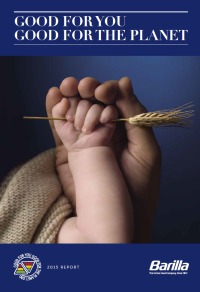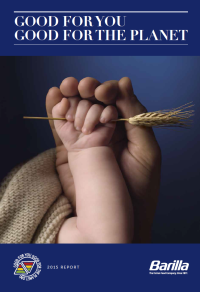
Dailycsr.com – 09 September 2015 – Barilla is an Italian food company which sought to combine “economic goals with social commitments” right from when it began to operate. The said combination is applicable in all the fields it functions. Barilla pursued information on economic and social issues which it sewed together with innovation, integrity and transparency, whereby the founders were able to easily identify and establish “their own entrepreneurial style” which they dutifully passed down to their line of generation.
For the company of Barilla the connotation of “Sustainability” has a unique shade attach to it, whereby it defines a “distinctive way of doing business” which calls for “Good for you, Good for the Planet” ethics. In this process, the company has a simultaneous system of accounting “economic, social, environmental aspects” of the company throughout its supply chain. This way, the company received a strong identity for its sustainable development whereby it thought of the community and the planet at large.
The expression of this attempt can be found in the quality of the products and the operational processes of the company which have been carved with “scrupulous attention”. Moreover, the futuristic plans of the group also are aligned with the concept of “Good for You, Good for the Planet”, whereby Barilla is going to expand its business scale. It has also adopted the “Double Pyramid” reference model “developed” by the “Barilla Center for Food & Nutrition Foundation” in the year of 2010, which relates nutritional values of a food keeping the surrounding environmental impact in mind.
In fact, it also showcases that:
“...foods recommended as the staple food in the Mediterranean diet – like fruits, vegetables, legumes, olive oil and grains, like pasta, standing at the basis of the Food Pyramid on the left– are also the foods with a lower impact on the environment”.
Nevertheless, there is also a third concept that defines Barilla’s “Sustainable Business strategy” besides “Good for You, Good for the Planet” which also takes into account “Good for the Communities”. In the company’s language, “Good for You” related to:
For the company of Barilla the connotation of “Sustainability” has a unique shade attach to it, whereby it defines a “distinctive way of doing business” which calls for “Good for you, Good for the Planet” ethics. In this process, the company has a simultaneous system of accounting “economic, social, environmental aspects” of the company throughout its supply chain. This way, the company received a strong identity for its sustainable development whereby it thought of the community and the planet at large.
The expression of this attempt can be found in the quality of the products and the operational processes of the company which have been carved with “scrupulous attention”. Moreover, the futuristic plans of the group also are aligned with the concept of “Good for You, Good for the Planet”, whereby Barilla is going to expand its business scale. It has also adopted the “Double Pyramid” reference model “developed” by the “Barilla Center for Food & Nutrition Foundation” in the year of 2010, which relates nutritional values of a food keeping the surrounding environmental impact in mind.
In fact, it also showcases that:
“...foods recommended as the staple food in the Mediterranean diet – like fruits, vegetables, legumes, olive oil and grains, like pasta, standing at the basis of the Food Pyramid on the left– are also the foods with a lower impact on the environment”.
Nevertheless, there is also a third concept that defines Barilla’s “Sustainable Business strategy” besides “Good for You, Good for the Planet” which also takes into account “Good for the Communities”. In the company’s language, “Good for You” related to:
- the promotion of healthy lifestyles and sustainable food and the continuous improvement of existing products;
- the launch of new products in line with the Double Pyramid model.
While the concept of “Good for the Planet” incorporates:
- responsible management of greenhouse gas emissions and water consumption at Barilla factories:
- 100% raw materials purchased applying process which improve sustainability in the supply chain;
- Development of sustainable cultivation in projects for all strategic supply chains.
And eventually the “Good for the Communities” looks after:
- Promoting healthy eating education for young people and supporting youth entrepreneurship in the world of food;
- Encouraging access to food and food security;
- Supporting populations struck by natural disasters through the timely provision of emergency food.
Keeping these ethics in mind Barilla has introduced its future goals which include promoting “consumer choices”, the products supplied by the company will figure in the bottom rung of the environmental pyramid, while it hill extend its helping hands towards “programs for access to food, educational projects and the promotion of diversity”.
In the present year, the company issued reformulated products over hundred in number wherein salt and fat levels were reduced. Moreover, Barilla managed to cut down on twenty percent of its CO2 emissions along with its water consumption “per ton of finished product” as compared to its 2010 figures.
References:
http://www.ethicalperformance.com


 Barilla’s Sustainable Culture Weaves Economic Growth With Its CSR Responsibilities
Barilla’s Sustainable Culture Weaves Economic Growth With Its CSR Responsibilities




 Companies
Companies